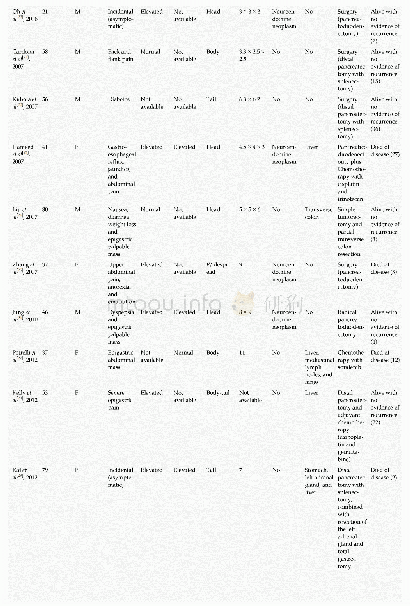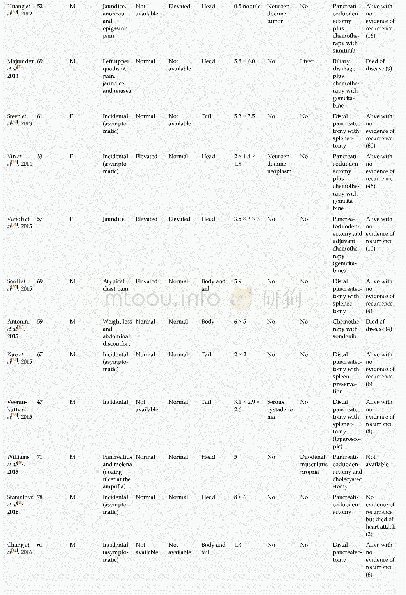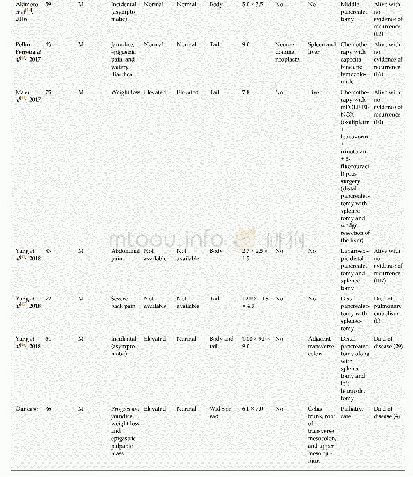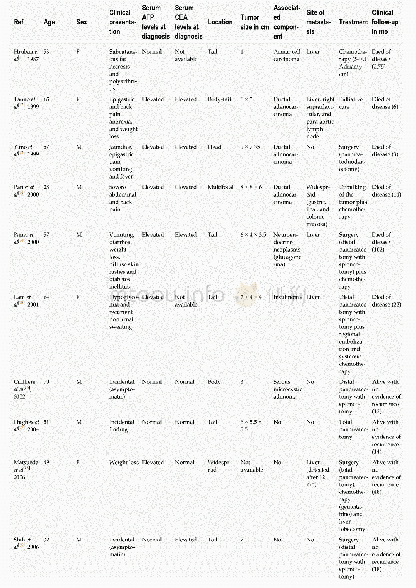《Table 1 Clinical features of known and novel CYP1B1 variants associated with PCG in Pakistani patie
 提示:宽带有限、当前游客访问压缩模式
提示:宽带有限、当前游客访问压缩模式
本系列图表出处文件名:随高清版一同展现
《Two novel variants in CYP1B1 gene: a major contributor of autosomal recessive primary congenital glaucoma with allelic heterogeneity in Pakistani patients》
NPL:No perception of light;PL:Perception of light;HM:Hand movement;NR:Not recordable;IOP:Intraocular pressure;CDR:Cup-Disc Ratio;Trabe:Trabeculectomy.
Four families(PCG-22,PCG-23,PCG-26 and PCG-27)harbored a frequent mutation,p.R390H,in a homozygous state(4/7;57%;Figure 1).All 27 affected individuals(15males and 12 females)in these four families had the onset of glaucoma up to first three years of life.The patients with early trabeculectomy had low IOP and the preserved vision.Whereas the patients who did not undergo any surgical intervention had elevated IOP,severe corneal opacity and poor visual acuity.The mean IOP in patients carrying p.R390H was 38 mm Hg(Table 1).One patient,PCG-22 IV:9 had phthisical eyes at the age of 42y and was blind.Interfamily phenotypic changes due to early interventions were seen in family PCG-23:patients V:4to V:7 underwent bilateral trabeculectomy at the early stage and had controlled IOP,near to normal CDR with improved and restored vision.Whereas patients IV:3,IV:4,IV:5 and IV:6were not surgically treated and had severe corneal opacity and megalocornea.The patients had poor visual acuity up to the perception of light,whereas the patient IV:5 was blind with maximum IOP 42 mm Hg.The detailed clinical findings of all families with p.R390H mutation are described in Table 1.
| 图表编号 | XD0032746900 严禁用于非法目的 |
|---|---|
| 绘制时间 | 2019.01.18 |
| 作者 | Yar Muhammad Waryah、Muhammad Iqbal、Shakeel Ahmed Sheikh、Muhammad Azhar Baig、Ashok Kumar Narsani、Muhammad Atif、Munir Ahmad Bhinder、Attiq Ur Rahman、Azam Iqbal Memon、Muhammad Suleman Pirzado、Ali Muhammad Waryah |
| 绘制单位 | Molecular Biology and Genetics Department Liaquat University of Medical and Health Sciences、Department of Biochemistry Islamia University,Bahawalpur、Molecular Biology and Genetics Department Liaquat University of Medical and Health Sciences、Department of |
| 更多格式 | 高清、无水印(增值服务) |
查看“Table 1 Clinical features of known and novel CYP1B1 variants associated with PCG in Pakistani patients”的人还看了
-

- Table 1 Summary of clinical features of hepatoid carcinomas of the pancreas reported in the English language literature
-

- Table 1 Summary of clinical features of hepatoid carcinomas of the pancreas reported in the English language literature
-

- Table 1 Summary of clinical features of hepatoid carcinomas of the pancreas reported in the English language literature





